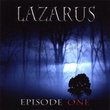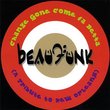| All Artists: Ludwig van Beethoven, Nina Tichman Title: Beethoven: Cello Sonatas Nos. 4 & 5 Members Wishing: 1 Total Copies: 0 Label: Naxos Release Date: 9/21/2004 Genre: Classical Styles: Chamber Music, Historical Periods, Classical (c.1770-1830), Instruments, Strings Number of Discs: 1 SwapaCD Credits: 1 UPC: 747313578726 |
Search - Ludwig van Beethoven, Nina Tichman :: Beethoven: Cello Sonatas Nos. 4 & 5
 | Ludwig van Beethoven, Nina Tichman Beethoven: Cello Sonatas Nos. 4 & 5 Genre: Classical
Written in 1815 during the composer?s final creative period, and at a time when the piano was becoming a more sonorous instrument, Beethoven?s Cello Sonatas Nos. 4 and 5 exploit the cello?s cantabile potential more fully t... more » |
Larger Image |
CD DetailsSynopsis
Album Description Written in 1815 during the composer?s final creative period, and at a time when the piano was becoming a more sonorous instrument, Beethoven?s Cello Sonatas Nos. 4 and 5 exploit the cello?s cantabile potential more fully than was previously possible. The great Sonata No. 5 features the first real slow movement of all the sonatas, a haunting Adagio in which both instruments are treated as equal partners. In the finale, an Allegro fugato, the musical argument is even more concentrated as Beethoven explores the extreme range of the developing keyboard instrument. This disc concludes Maria Kliegel?s recordings of the complete music for cello and piano by Beethoven. Similar CDs
|
CD ReviewsKliegel & Tichman Finish Their Very Fine Beethoven Series J Scott Morrison | Middlebury VT, USA | 10/03/2004 (5 out of 5 stars) "Maria Kliegel is a German cellist whose name has become increasingly familiar over the past few years. She is, in my opinion, one of the finest cellists to come along in a while. And her piano partner here, Nina Tichman, an American teaching in Germany, is an equally secure and musicianly player. I wrote a very positive review of their earliest issue in this series of all of Beethoven's cello/piano music. And here the pair finish out that task with Volume 3 which includes not only the two final sonatas, No. 4 in C, Op. 102, No. 1 and No. 5 in D, Op. 102, No. 2 (sometimes called the 'Erdödy Sonatas' after Countess Maria von Erdödy, a Beethoven patroness to whom they are dedicated), but also the rather lighter set of variations on 'See here the conqu'ring hero comes' from Handel's 'Judas Maccabaeus,' WoO45 and a real rarity, the viola and cello duet in E flat, WoO 32.
The playing is at a high level throughout. Kliegel and Tichman are able to convey the drama of the sonatas without their sound becoming rough or unpleasant. Many cello/piano duos soften their approach, using a more rounded tone to avoid that problem. The present duo meet the challenges squarely and come through with, particularly in the outer movements, strongly delineated and yet beautiful-toned performances. I have been very taken with the complete set done by David Finckel and Wu Han (on their own label, ArtistLed, available only from the label's website) and of course the Rostropovich/Richter set. But this duo meets their competitors head on and is at least the equal of the others. The long line of the adagio movements in both sonatas is beautifully maintained. The brio of the two final movements is equally effective. But best of all are the large first movements of the two sonatas. They convey Beethoven's structural thinking clearly and expertly and with all possible drama. The Maccabaeus variations are not Beethoven's finest composition, but they are fun to hear (and, I suspect, to play). Our duo plays them with sweet innocence and obvious joy. The big surprise, largely because I'd never heard the viola/cello duet before, is that although this is early Beethoven (written probably in 1798) has a humorous subtitle ('Duet with Two Obbligato Eyeglasses,' reportedly given to the work jokingly by Beethoven because the amateur cellist for whom it was written had very weak eyesight) is that it is a very strong work. Indeed, this thirteen minute work in two movements reminds at times of Mozart's string trio, the great Divertimento in E flat, K. 563. And Zimmermann and Kliegel play the socks off it. So, the bottom line is that this issue, like its predecessors, is a very strong entry in the field, and when one considers Naxos's budget price, it is well-nigh irresistible. TT=58:47 Scott Morrison" |

 Track Listings (21) - Disc #1
Track Listings (21) - Disc #1


